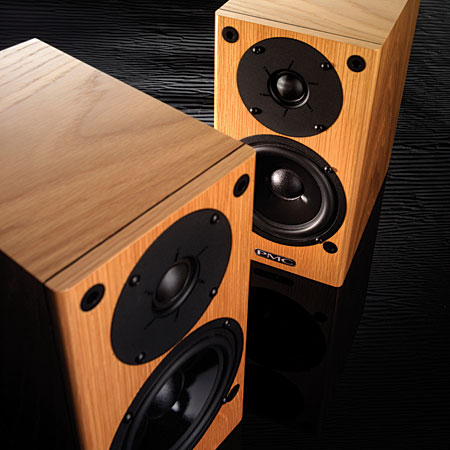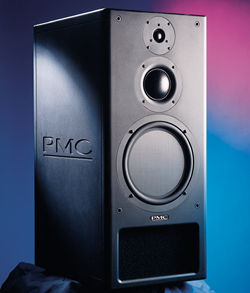I did a short text on transmission-line speakers, perhaps someone finds it entertaining enough to read here as well:
---------
The classic transmission-line speaker is a long acoustic channel with decreasing area, filled with damping material to absorb all sound. The claimed benefit is removal of all resonances and reflected sound from inside the cabinet, so the driver operates in a cabinet that is removed acoustically - like an acoustic black hole.
It was supposed to be driven by a driver with heavy moving mass, and low motor force. The length of the channel determines the low frequency cut-off, where this length equals 1/4 wavelength. This gives a speaker with quite low cut-off, and low efficiency.
Then someone came up with the idea of letting some of the sound radiate out from the end of the pipe, to increase efficiency. Since this sound is delayed from the sound from the driver diaphragm, the port output and driver output combine in-phase and the total sound output is then increased.
Of commercial designs utilizing this concept, the IMF were famous for its reproduction of the very lowest frequencies - in a time where subwoofers did not exist, this was among very few speakers that could reproduce sound down to and below 20Hz.
Transmission lines are complicated to design and build. And there are some technical challenges that can be difficult to solve. The channel itself can have resonances, especially upwards in frequency, above its intended frequency range. The port output is delayed and only sums correctly with the sound from the front of the driver across a limited frequency range - there will be cancellation above this range, and also problems with delayed sound output.
The ported variations will have the benefit of acoustic loading and increased efficiency due to the port output, similar to an ordinary ported bass-reflex box.
The closed-end variant does not have those issues with delayed sound and problematic summation, and it is possible to achieve resonance-free response, and this black-hole cabinet behavior. But the ordinary sealed cabinet can perform just as good, when filled appropriately with damping material.
Great care must be taken when designing a transmission line with acoustic port at the end of the channel, to ensure there are no resonances left, and attenuate the output from the port at higher frequencies. If done properly, it will perform quite similar to a ported box.
I do not have a transmission line to show, but I can use the F2 as an example of a ported horn design that works in a similar way, and presents the same challenges. The driver is mounted off-set into the channel of a short horn, and this horn is then ported at the bottom of the cabinet. Like this:

For this to work properly, the horn channel must be damped very accurately, in the right places with the right type and amount of damping material. Here is the frequency response of the port output - yellow is with no damping, red is damped and how the speakers is when finished:

We see that the undamped response is quite horrible and useless, with severe resonances. The damped is smooth and falls off towards higher frequencies.
Then the question is - why bother with such a complicated design, with all its potential issues? For the F2, the answer is simply that this bass driver needs a cabinet with acoustic reinforcement from around 200Hz and down, to provide any bass at all. The F2 now achieves reasonably flat response down to a roll-off at 60Hz, which gives typical in-room response down to around 40Hz. (Now, what is the point of this speaker - it does not play full-range bass - still needs a subwoofer, and then you really do not need the extension down to 40-60hz..)
Whether you call it transmission-line or something else, what we are dealing with here are cabinets with some sort of acoustic loading using a channel that is long compared to the wavelength. And they can have benefits like increased output capacity, extended low-frequency range and better acoustic coupling.
------
My opinion is that transmission-line - or similar acoustic loading using long channels - is problematic for full-range speakers covering both bass and midrange frequencies. Today we can use simulation to optimize the design, but physical laws still apply.
---------
The classic transmission-line speaker is a long acoustic channel with decreasing area, filled with damping material to absorb all sound. The claimed benefit is removal of all resonances and reflected sound from inside the cabinet, so the driver operates in a cabinet that is removed acoustically - like an acoustic black hole.
It was supposed to be driven by a driver with heavy moving mass, and low motor force. The length of the channel determines the low frequency cut-off, where this length equals 1/4 wavelength. This gives a speaker with quite low cut-off, and low efficiency.
Then someone came up with the idea of letting some of the sound radiate out from the end of the pipe, to increase efficiency. Since this sound is delayed from the sound from the driver diaphragm, the port output and driver output combine in-phase and the total sound output is then increased.
Of commercial designs utilizing this concept, the IMF were famous for its reproduction of the very lowest frequencies - in a time where subwoofers did not exist, this was among very few speakers that could reproduce sound down to and below 20Hz.
Transmission lines are complicated to design and build. And there are some technical challenges that can be difficult to solve. The channel itself can have resonances, especially upwards in frequency, above its intended frequency range. The port output is delayed and only sums correctly with the sound from the front of the driver across a limited frequency range - there will be cancellation above this range, and also problems with delayed sound output.
The ported variations will have the benefit of acoustic loading and increased efficiency due to the port output, similar to an ordinary ported bass-reflex box.
The closed-end variant does not have those issues with delayed sound and problematic summation, and it is possible to achieve resonance-free response, and this black-hole cabinet behavior. But the ordinary sealed cabinet can perform just as good, when filled appropriately with damping material.
Great care must be taken when designing a transmission line with acoustic port at the end of the channel, to ensure there are no resonances left, and attenuate the output from the port at higher frequencies. If done properly, it will perform quite similar to a ported box.
I do not have a transmission line to show, but I can use the F2 as an example of a ported horn design that works in a similar way, and presents the same challenges. The driver is mounted off-set into the channel of a short horn, and this horn is then ported at the bottom of the cabinet. Like this:
For this to work properly, the horn channel must be damped very accurately, in the right places with the right type and amount of damping material. Here is the frequency response of the port output - yellow is with no damping, red is damped and how the speakers is when finished:
We see that the undamped response is quite horrible and useless, with severe resonances. The damped is smooth and falls off towards higher frequencies.
Then the question is - why bother with such a complicated design, with all its potential issues? For the F2, the answer is simply that this bass driver needs a cabinet with acoustic reinforcement from around 200Hz and down, to provide any bass at all. The F2 now achieves reasonably flat response down to a roll-off at 60Hz, which gives typical in-room response down to around 40Hz. (Now, what is the point of this speaker - it does not play full-range bass - still needs a subwoofer, and then you really do not need the extension down to 40-60hz..)
Whether you call it transmission-line or something else, what we are dealing with here are cabinets with some sort of acoustic loading using a channel that is long compared to the wavelength. And they can have benefits like increased output capacity, extended low-frequency range and better acoustic coupling.
------
My opinion is that transmission-line - or similar acoustic loading using long channels - is problematic for full-range speakers covering both bass and midrange frequencies. Today we can use simulation to optimize the design, but physical laws still apply.




